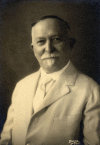Meanings & motives. Experts debating tobacco addiction
- PMID: 18703459
- PMCID: PMC2636463
- DOI: 10.2105/AJPH.2007.114124
Meanings & motives. Experts debating tobacco addiction
Abstract
Over the last 50 years, tobacco has been excluded from and then included in the category of addictive substances. We investigated influences on these opposing definitions and their application in expert witness testimony in litigation in the 1990s and 2000s. A scientist with ties to the tobacco industry influenced the selection of a definition of addiction that led to the classification of tobacco as a "habituation" in the 1964 Surgeon General's Advisory Committee report. Tobacco was later defined as addictive in the 1988 surgeon general's report. Expert witnesses for tobacco companies used the 1964 report's definition until Philip Morris Tobacco Company publicly changed its position in 1997 to agree that nicotine was addictive. Expert witnesses for plaintiffs suing the tobacco industry used the 1988 report's definition, arguing that new definitions were superior because of scientific advance. Both sides viewed addiction as an objective entity that could be defined more or less accurately.
Figures


Similar articles
-
Public versus internal conceptions of addiction: An analysis of internal Philip Morris documents.PLoS Med. 2018 May 1;15(5):e1002562. doi: 10.1371/journal.pmed.1002562. eCollection 2018 May. PLoS Med. 2018. PMID: 29715300 Free PMC article.
-
Tobacco industry litigation position on addiction: continued dependence on past views.Tob Control. 2006 Dec;15 Suppl 4(Suppl 4):iv27-36. doi: 10.1136/tc.2005.013789. Tob Control. 2006. PMID: 17130621 Free PMC article. Review.
-
Big marijuana--lessons from big tobacco.N Engl J Med. 2014 Jul 31;371(5):399-401. doi: 10.1056/NEJMp1406074. Epub 2014 Jun 11. N Engl J Med. 2014. PMID: 24918955 No abstract available.
-
The 50th anniversary of the US surgeon general's report on tobacco: what we've accomplished and where we go from here.J Am Heart Assoc. 2014 Jan 8;3(1):e000740. doi: 10.1161/JAHA.113.000740. J Am Heart Assoc. 2014. PMID: 24401650 Free PMC article. No abstract available.
-
Tobacco and otorhinolaryngology: epic and disaster.Eur Ann Otorhinolaryngol Head Neck Dis. 2014 Jun;131(3):183-8. doi: 10.1016/j.anorl.2013.11.003. Epub 2014 Jun 5. Eur Ann Otorhinolaryngol Head Neck Dis. 2014. PMID: 24908635 Review.
Cited by
-
The nature, scope, and development of the global tobacco control epistemic community.Am J Public Health. 2011 Nov;101(11):2044-54. doi: 10.2105/AJPH.2011.300303. Epub 2011 Sep 22. Am J Public Health. 2011. PMID: 21940926 Free PMC article.
-
The perils of ignoring history: Big Tobacco played dirty and millions died. How similar is Big Food?Milbank Q. 2009 Mar;87(1):259-94. doi: 10.1111/j.1468-0009.2009.00555.x. Milbank Q. 2009. PMID: 19298423 Free PMC article.
-
Public versus internal conceptions of addiction: An analysis of internal Philip Morris documents.PLoS Med. 2018 May 1;15(5):e1002562. doi: 10.1371/journal.pmed.1002562. eCollection 2018 May. PLoS Med. 2018. PMID: 29715300 Free PMC article.
-
Systematic Assessment of Research on Autism Spectrum Disorder (ASD) and Mercury Reveals Conflicts of Interest and the Need for Transparency in Autism Research.Sci Eng Ethics. 2017 Dec;23(6):1691-1718. doi: 10.1007/s11948-017-9983-2. Sci Eng Ethics. 2017. Retraction in: Sci Eng Ethics. 2017 Dec;23(6):1689-1690. doi: 10.1007/s11948-015-9713-6. PMID: 29119411 Free PMC article. Retracted. Review.
-
Do we believe the tobacco industry lied to us? Association with smoking behavior in a military population.Health Educ Res. 2009 Dec;24(6):909-21. doi: 10.1093/her/cyp029. Epub 2009 Jun 15. Health Educ Res. 2009. PMID: 19528314 Free PMC article.
References
-
- “PM21 Overview,” January 19, 1999, Philip Morris, Bates no. 2072737861/7899, available at http://legacy.library.ucsf.edu/tid/tlu95c00, accessed April 22, 2008 (as were all other Web citations); E.A. Smith and R.E. Malone, “Thinking the ‘Unthinkable’: Why Philip Morris Considered Quitting,”Tobacco Control 12 (2003): 208–213; N. Hirschhorn, “Corporate Social Responsibility and the Tobacco Industry: Hope or Hype?” Tobacco Control 13 (2004): 447–453.
-
- V. Berridge, “Two Tales of Addiction: Opium and Nicotine,” Human Psychopharmacology 12 (1997): S45–S53; B. Thom, Dealing With Drink: Alcohol and Social Policy From Treatment to Management (London: Free Association Books, 1999).
-
- R. Room,
-
- Berridge, “Two Tales of Addiction.”.
-
- R. Porter, “Introduction,” in T. Trotter, An Essay Medical, Philosophical, and Chemical on Drunkenness and Its Effects on the Human Body (London: Routledge, 1988
Publication types
MeSH terms
Grants and funding
LinkOut - more resources
Full Text Sources

